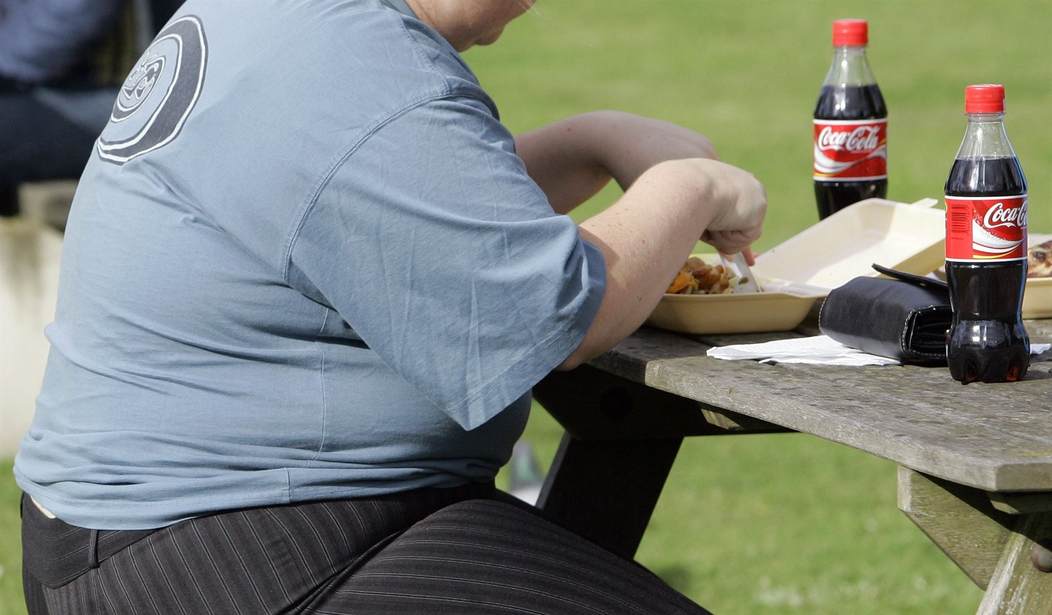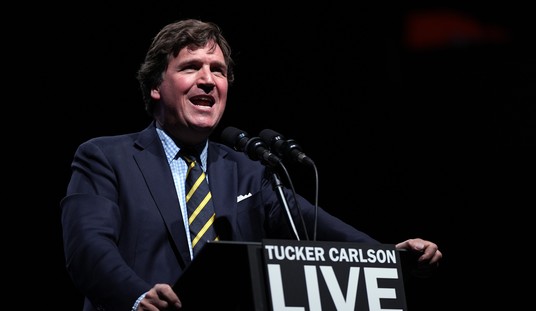America has been dealing with an obesity crisis for 50 years or more — that is, if something that has lasted 50 years can be called a crisis. For the duration of that 50 years or more, the dominant medical advice and standard of care has been "eat less, move more" and the advice that "calories in should be less than calories out." This approach, supported by government dietary guidelines, has one problem: a nearly 100% failure rate.
In any other field of medicine, a treatment approach that failed 95 or 98 patients out of 100 would be abandoned, yet the advice persists. Why? Because the underlying assumption is that obesity is a character flaw, not a disease process.
For nearly 100 years, serious scientific studies have called this whole assumption into question, while accumulating evidence has demonstrated that a major — perhaps the major — problem is metabolic dysregulation: insulin resistance, which leads to hyperinsulinemia, an abnormally high level of insulin in the blood.
The "Eat Less, Move More" Myth
"Eat less, move more" assumes a naively simplistic thermodynamic model: calories in must equal calories out. This model disregards the complex feedback mechanisms that actually regulate metabolism, as if the body were just an electric motor. In reality, the body has a number of mechanisms to maintain homeostasis. Some are simple and obvious, like sweating and shivering to respond to heat and cold. Some aren't obviously connected, like fever when fighting an infection. And some are only being identified recently. But the calories-in-calories-out model presumes there's no similar mechanism to regulate weight.
The natural result has been doctors prescribing more or less extreme calorie restriction, like the Duke Rice Diet that restricted consumption to as little as 800 calories a day.
Of course, no one doubts that starvation diets result in weight loss. As the effects of the German and Japanese concentration camps became known, the U.S. government financed a study, the Minnesota Starvation Experiment (1944-1945), in which 36 healthy men volunteered to be placed on a 1560-calorie-a-day diet, about half their normal intake. (Notice that's considerably more than many medically prescribed diets.)
The impact was dramatic. In response to the reduction in calories in, their bodies responded by decreasing their basal metabolic rate (the calories consumed just by normal metabolic function, exclusive of exercise) by as much as 40%. They also suffered loss of fat, as might be expected, but the subjects also lost muscle mass. Their immune function was impaired, and there were hormonal disruptions starting with a decrease in thyroid hormones. These adaptations mean that reducing calories in doesn't have the anticipated effect: it just means calories out are similarly reduced.
Psychologically, it was also very difficult. Subjects became food-obsessed, irritable, and depressed. Some subjects exhibited what the researchers called "food neurosis."
Anyone who has ever seriously tried a restricted-calorie diet will recognize all of that.
Obesity and Insulin Resistance
Diabetes, since it was first described, has been characterized by sugar in the urine. In fact, the term "diabetes mellitus" literally means "excessive urine that tastes like honey." (Luckily, we have better means of diagnosis than tasting urine now.) The first, and more obvious form of diabetes, called "Type 1," used to be called "juvenile diabetes." It's characterised by several symptoms: excessive thirst, excessive urination, excessive hunger, along with massive weight loss, and eventually by ketoacidosis, coma, and death.
About a hundred years ago, researchers discovered that they could induce something like Type 1 diabetes by surgically removing the pancreas of experimental animals. This was followed shortly by identifying the hormone that the pancreas was producing, which was named insulin. Then, researchers at the University of Toronto learned to isolate insulin from animals and tried injecting it into diabetes patients in the last stages.
The results were dramatic, miraculous. The patients' ketoacidosis went away. They started to regain the weight they'd lost, and quickly returned to a normal life — doctors at the time called it a "resurrections" — except for the need for regular insulin injections.
Type 2 Diabetes and Obesity
A few years later, another form of diabetes was identified, originally called "adult-onset" and now "Type two." The major identifying symptom, sugar in urine, was the same, but in Type 2 diabetes, it was accompanied by obesity, not wasting. Type 2 diabetes is characterised by insulin resistance — the body reacts less to high levels of insulin in the blood, leading to hyperinsulinemia, excessive insulin, as the pancreas tries to maintain normal metabolism when normal amounts of insulin aren't doing their job.
The overt consequences of insulin resistance are similar to those of Type 1 Diabetes — high blood sugar and then sugar in the urine as the kidneys try to excrete more sugar.
Insulin, however, does a lot more than regulate the metabolism of sugar for energy. The liver responds to high levels of insulin by turning glucose into glycogen and storing it, both in the liver and in the muscles, as a metabolic reserve against future needs. Adipocytes — fat cells — respond by storing triglycerides as fat. The result is obesity in most people.
Chronic hyperinsulinemia has a number of other effects. First, it downregulates the insulin receptors and desensitizes the signaling pathways coupled to those receptors.
The liver responds to hyperinsulinemia by synthesizing more glucose, which raises blood sugar even more, while it also deposits abnormal amounts of fat in the liver, which leads to non-alcoholic fatty liver disease.
Some of the signalling hormones that are suppressed by excessive insulin also suppress the uptake of insulin by skeletal muscle, which also leads to excessive blood sugar.
As noted above, adipose tissue responds in part by storing more fat, but it also breaks down triglycerides (fats) and releases free fatty acids (FFAs), and elevated levels of FFAs lead to inflammation. Inflammation, in turn, encourages more insulin resistance.
But wait, there's more! Insulin resistance disrupts leptin signalling. Leptin is a hormone that regulates satiety, so insulin resistance also encourages overeating.
Insulin Resistance and Obesity
Traditionally, obesity is considered a primary driver of insulin resistance, but more recent studies suggest the causation is reversed — insulin resistance leads to obesity.
A number of studies have supported this. Studies have shown that elevated insulin levels predict weight gain in pre-diabetic patients, even before obesity is evident. Excessive insulin levels also drive storage of fat in both the liver and skeletal muscle, even before evident obesity. In fact, some studies suggest that obesity in the absence of hyperinsulinemia is at least rare. Those studies are confounded by the usual medical criterion of obesity, high body mass index (BMI). As a measure of obesity, BMI has a significant problem, since heavily muscled individuals can have a high BMI while having low body fat — like athletes and bodybuilders.
What Causes Insulin Resistance and Consequent Obesity?
My dissertation advisor told me that all research reports should end with a paragraph that includes "more research is needed." Type 2 diabetes, insulin resistance, and their causes are certainly a candidate. But existing research shows a plausible mechanism: a genetic predisposition leads to insulin resistance, and the pancreas compensates by producing more insulin. This drives fat cells to store excess fat, fueling obesity. But that leads to a chain of metabolic results that lead to more insulin resistance, while the fat cells respond by storing more fat. It's a vicious circle that encourages more obesity.
How Can People Reverse This Process?
Oddly, the basic answer is simple and has been known for more than a century: both kinds of diabetes are dysfunctions of carbohydrate metabolism, and successful treatment includes reducing the challenge to that dysfunction. Low or zero-carb diets were the first successful treatment for Type 1 diabetes, although not nearly as successful as insulin supplementation became. And low-carb diets have been a popular remedy for obesity for even longer, although they have usually been dismissed as quackery.
I've been through this mill myself: Between my 8th and 9th grade, my father and I both went to the Stillman Quick Weight Loss Diet. The results for me were quite dramatic: I lost a lot of weight and suddenly was considering going out for the cross-country team. But the Stillman diet was really restrictive: lean meat without added fat, broiled or boiled. Boiled eggs. Cottage cheese. Eight glasses of water a day, plus all the black coffee or tea you wanted, and a multivitamin tablet daily.
There are only so many days you can eat skinless boiled chicken and cottage cheese before it begins to wear thin. And when I went back to eating a normal diet, the weight came back, and people, including my doctor, simply said, "See, eat less, move more is the only real answer."
I continued to struggle with my weight, and then the government's diet advice came out, saying low-fat, high-carb was the right answer. (See, for example, the Dean Ornish diet, which was nearly vegetarian and included only 10% calories from fats.)
I tried, I really did. For months, I ate high-carb, low-fat, and I was race walking up to 30 miles a week. I lost some weight, but not much. I was a vegetarian for something like six years, and vegan for about a year of that, basically to no avail.
The Atkins Diet came along, and it was more successful but still hard to maintain. But in the meantime, real science was starting to come out. It started with studies of the Pima Indians in the '50s and '60s. Those, along with the Minnesota Starvation Experiment, were cracks in the wall, and the actual success of Stillman and Atkins led some iconoclastic doctors to experiment with their own patients, with consistently good effects.
Biochemistry and physiology are finally catching up, and it's becoming more acceptable in medical practice as well. The famous Duke Rice Diet has been superseded by Eric Westman's program at Duke, which is a low-carb program. Gary Taubes has crusaded for recognition of the research that has been discounted by traditional medicine. Jason Fung and Giles Yeo are successfully advocating for new, more informed approaches.
And from my point of view, I've lost over 100 pounds and reduced my A1c — a measure of average blood sugar — from over 10% a few years ago to under 6%. In other words, from dangerous hyperglycemia indicating serious Type 2 diabetes to basically normal.
I call that success.
Resources
Gary Taubes first broke open the story of the real biochemistry of weight regulation in articles at Science Magazine and The New York Magazine, and followed with a heavily researched, heavily footnoted book, Why We Get Fat. It's interesting but sometimes a little tough going; he has excerpted it in The Elusive Benefits of Undereating and Exercise: Why We Get Fat, and followed it with Rethinking Diabetes and The Case for Keto: Rethinking Weight Control and the Science and Practice of Low-Carb/High-Fat Eating. I recommend them all.
Jason Fung is an advocate of intermittent fasting, which I haven't really talked about in this article. Intermittent fasting is also an effective approach for some people, and interestingly, it also reduces insulin resistance. His book The Obesity Code: Unlocking the Secrets of Weight Loss (Why Intermittent Fasting Is the Key to Controlling Your Weight) is a good start.
Giles Yeo has an excellent book, Why Calories Don't Count: How We Got the Science of Weight Loss Wrong, which goes into greater detail than I've been able to, describing why the calories-in-calories-out model is flawed.
Last, Nina Teicholz's book The Big Fat Surprise: Why Butter, Meat and Cheese Belong in a Healthy Diet describes how low-fat diets turn out not to be as healthy as we have been told.










